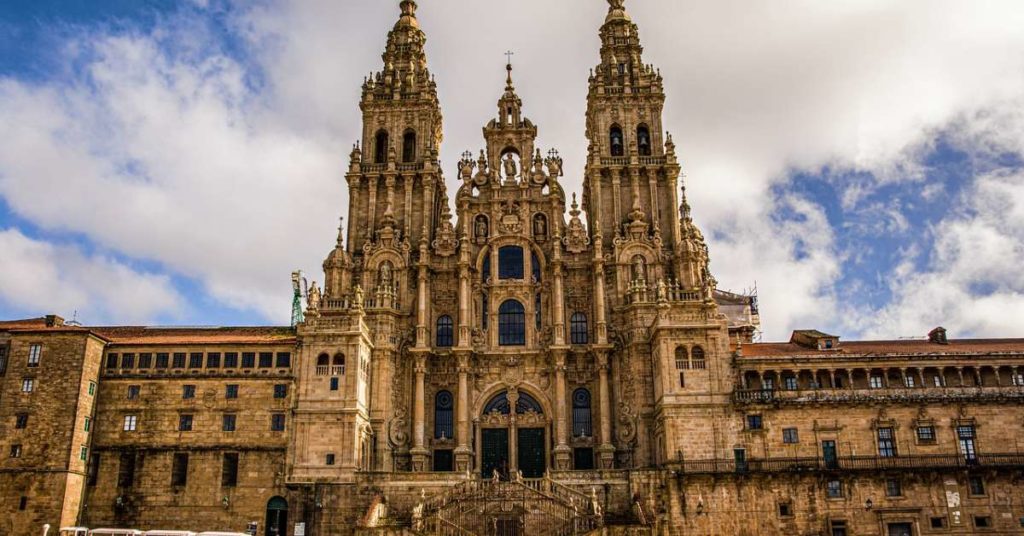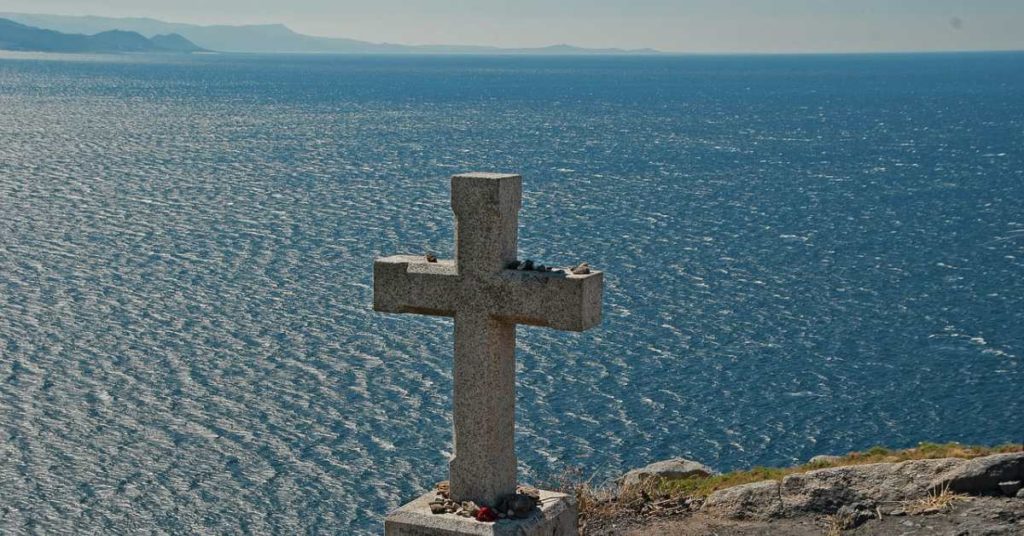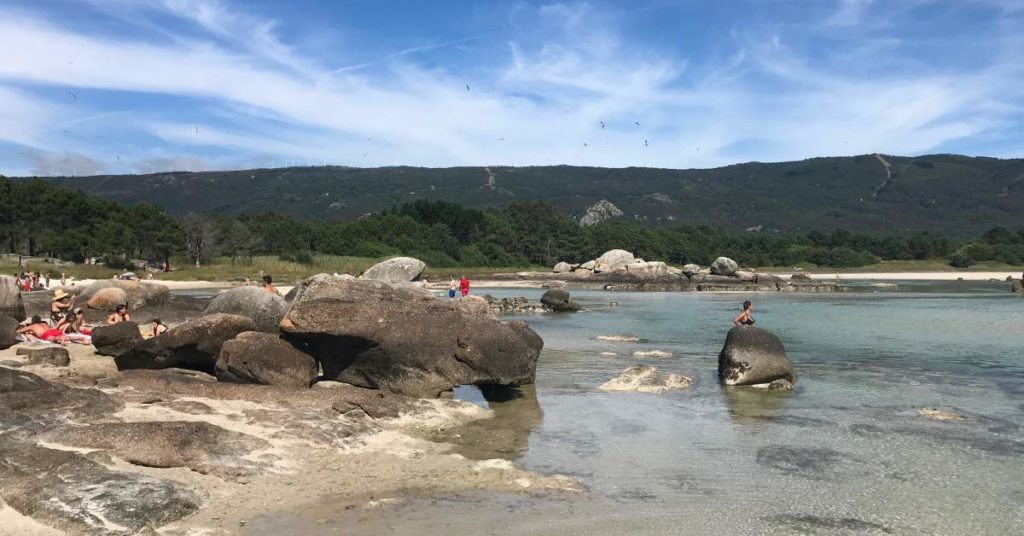When asking about the best places in Galicia, Spain, as with any travel destination, it depends on what type of experiences you’re looking for to enhance your trip. But one thing is for sure, no matter what you have in mind, Galicia has an answer. From history, to beaches, to mountains, to great food, there are places in Galicia for every type of traveler.
Galicia is a very particular part of Spain; an autonomous region located in the north-west of the country with its own language (Gallego) and strong traditions of Celtic origins. In fact, bagpipes can be heard throughout the region, hinting at the Celtic heritage. Galicians take pride in this identity, even if some of the Anglo-Saxon Celtic countries are a bit dubious of the connection.

The region, which gets its name from the Gallaeci, the Celtic speakers who lived in northwestern Iberia for the first millennium B.C., was conquered by the Romans during the reign of Augustus.
A trip to Galicia will include a tour of lighthouses, national parks, centuries-old trees, white beaches with crystal clear waters, impressive cathedrals, and traces of a people who marked Galician history forever, namely the Romans.
Top Sites in Galicia
Galicia is often overlooked by tourists. But this region has a lot to offer, from its stunning coastline to its lush green mountains; from its charming towns to its delicious Spanish cuisine. If you’re looking for a place to get away from the hustle and bustle of city life, then Galicia is the perfect destination.
To help you plan your trip, we’ve put together a list of the top sites to see in Galicia. We’ve included a mix of tourist hotspots and hidden gems, so you can make the most of your time in this unspoiled corner of Spain.
Contact Us Today! The initial consultation is always FREE!
Santiago de Compostela
Let’s start with the obvious. The city of Santiago de Compostela is best known for being the final destination of the Camino de Santiago, a pilgrimage route that has been used since the Middle Ages.
Every year, thousands of people from all over the world come to Santiago de Compostela to walk the Camino and visit the city’s famous cathedral at the end of the journey.

The Camino de Santiago is a network of trails that lead to the shrine of Santiago de Compostela, the supposed burial site of the apostle Saint James. The Camino de Santiago has been used by pilgrims for centuries, and the city of Santiago de Compostela has become a major stop on the pilgrimage route.
Because of its religious significance and its beautiful setting, Santiago de Compostela is one of the most popular tourist destinations in Spain.
Santiago de Compostela is also a UNESCO World Heritage Site, thanks to its well-preserved architecture and history. The city is home to many beautiful churches and buildings, and it is a popular tourist destination for those interested in Spanish culture and history.
A Coruña
This is a lovely little city located on the northwest coast of Spain. The city is known for its Roman ruins, medieval architecture, picturesque harbor, and stunning beaches. Visitors to A Coruña can enjoy a variety of activities, including biking, hiking, and exploring the city’s many historical sites.
If you’re planning a trip to A Coruña, be sure to add these must-see attractions to your list:
The Cathedral of Santa María de Coruña – This Gothic-style cathedral is one of the most important buildings in the city. It was built in the 14th century and is home to a stunning stained glass window.
Tower of Hercules (Torre de Hercules) – The city of A Coruña is home to the historic Tower of Hercules, the oldest lighthouse of Roman origin currently in operation in the world and declared a UNESCO World Heritage Site. Probably the lighthouse was built around the first century AD, and according to legend it was erected in honor of Hercules, the hero who arrived in Galicia to kill the giant Geryon, who dominated these lands in a fierce way.

The tower is almost entirely open to visitors, with the exception of the top floor where the lantern is located. Climbing the steep stairs that compose it, you will be able to enjoy an enchanting view of the city and the Atlantic Ocean. The cost of the ticket is € 3.00
The Museum of Fine Arts, which opened in the 19th century, has a collection of paintings from different centuries. You can also visit the Asunción Real House to see pieces by Picasso, or enjoy futuristic architecture at A Espazo Galicia Contemporary Art Museum – MARCO, one of the best modern art museums in Europe.
Lugo
Lugo was founded by the Romans between 26 and 12 BC. and it is the only city in Europe to be surrounded by the ancient Roman Walls that have remained practically intact. With 71 towers, up to 15 meters high and 2.5 km long, the walls are entirely accessible for free and have been included among the assets that are part of the UNESCO World Heritage Site.
In the city there are several historical attractions that are absolutely worth a visit, too. For example, the Roman Bridge, which crosses the Miño River, and the majestic Lugo Cathedral of Santa Maria de Lara, both dating back to the 3rd century.
Lugo is a great place to visit for history buffs and nature lovers alike. There is plenty to see and do in this beautiful Spanish city, so be sure to add it to your travel itinerary.
Cape Finisterre
A trip to Galicia cannot be considered complete if you do not visit Finisterre, a municipality in the province of A Coruña, whose name derives from the Latin meaning “border of the land.” One of the best places in Galicia to watch a sunset.
Finisterre was considered by the Romans to be the furthest border of the earth, considering that it is one of the westernmost points of Spain. Nowadays we realize that the westernmost point of Europe is Cabo da Roca in Portugal.

Some faithful who embark on the way to Santiago de Compostela continue the path for about a hundred kilometers, stopping right in Cabo Fisterra, where they traditionally burn one of the garments worn during the journey.
One of the major attractions of the area is the Lighthouse located on Mount Facho, which can be accessed along a small road that starts from the village. During the uphill path it is possible to admire the view of the coast and continuing further you reach the hermitage of San Guillermo.
From here the sunset offers a unique spectacle as it melts into the depths of the ocean, coloring the sky with shades of orange an pink. It’s not hard to imagine how this rugged coastline became known as “The Death Coast” (Costa de la Muerte) due to the huge amount of shipwrecks that happened over the years.
Ourense and the Thermal Springs
Far from the sea but worthy of being discovered, Ourense is the Galician city famous above all for the thermal baths of As Burgas, which are located right in the historic center.
Outside the city you will find several other spas, some free, others for a small fee, and they can all be reached aboard the Tren de las Termas, the tourist train that stops at all the thermal water facilities of Ourense.
In the area of the historic center is the Plaza Mayor, with a very particular appearance, irregular and with a sloping floor. To visit in these parts the Cathedral of Ourense, dating back to the twelfth century, inside is the Portico del Paraiso, inspired by the Portico de la Gloria of the Cathedral of Santiago de Compostela, full of arches and magnificent iconographic decorations (cost of the visit € 5.00).
Vigo
is a city located in the province of Pontevedra, and is located on an inlet of the Atlantic Ocean. Here you can spend time on the beach, as is the case of the famous Praia de Samil, 1,700 meters long, stroll along the promenade, full of cafes, restaurants and kiosks, go around the Casco Vello, the old town and visit ancient historical sites .
One of these is the Castro Fortress, just 15 minutes from the center. It was built in 1665 on a hill and from here you can enjoy the views of the city and the ocean, while immersed in beautiful gardens. Do not miss the free visit to the Quiñones de León Museum in Vigo, located in a historic building from 1670, and which houses precious collections of Galician paintings.
Best Galicia Spain Beaches
Locals agree the best places to stay in Galicia Spain are along the coastline full of stunning beaches. From the sandy beaches of the Costa da Morte to the dramatic cliffs of the Rías Altas, there is something for everyone in Galicia.

Here are just a few of the best beaches in Galicia:
- Praia de Xoan – this beach is located in the town of Noia and is a great spot for swimming, sunbathing, and fishing.
- Praia de Riazor – this beach is located in the city of A Coruña and is a popular spot for surfing and sunbathing.
- Praia de Las Catedrais – this beach is located in the province of Lugo and is famous for its limestone cliffs and rock formations.
- Carnota is definitely one of the best beaches in Galicia, and maybe one of the best beaches in Spain. It’s marked by forest greenery around the periphery with rugged rock formations along the waterline.
With its dramatic coastline, ample sunshine and stunning beaches, it’s no wonder that Galicia is one of Spain’s top tourist destinations. Whether you’re looking for a quiet spot to relax or a lively beach town to party, you’ll find it all in Galicia.
So what are you waiting for? Pack your beach bag and head to Galicia for a summer you’ll never forget!
What are the best places in Galicia, Spain?
An itinerary in Galicia should include Santiago de Compostela, A Coruña, the thermal baths of Ourense, the view from Cape Finisterre, and at least one of the many picturesque beaches.
What Is Galicia Spain Famous For?
Galicia is well known for its stunning scenery, its green mountains and forests, and its many rivers and lakes, as well as world-class beaches.
Galicia is an autonomous community of Spain and is one of the 17 historic regions that make up the country. It is one of the most sparsely populated regions in all of Europe, with a population of just over 2.7 million people. The capital of Galicia is Santiago de Compostela, which is also the capital of the province of A Coruña.
What is the most famous food from Galicia?
Some of the most popular dishes from Galicia include octopus (pulpo), clams, empanadas, peppers (pimientos del padron), and Galician soup (caldo gallego).
